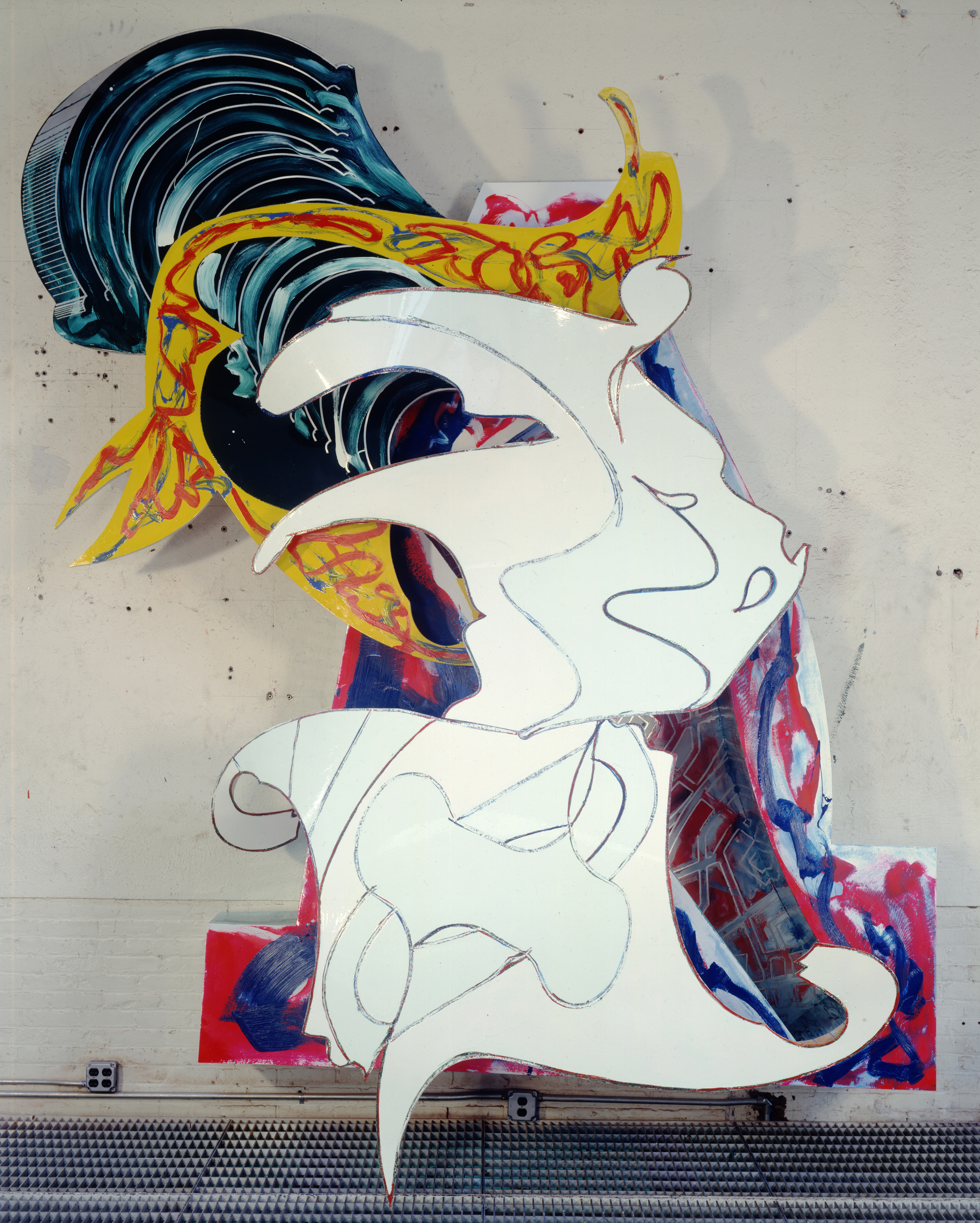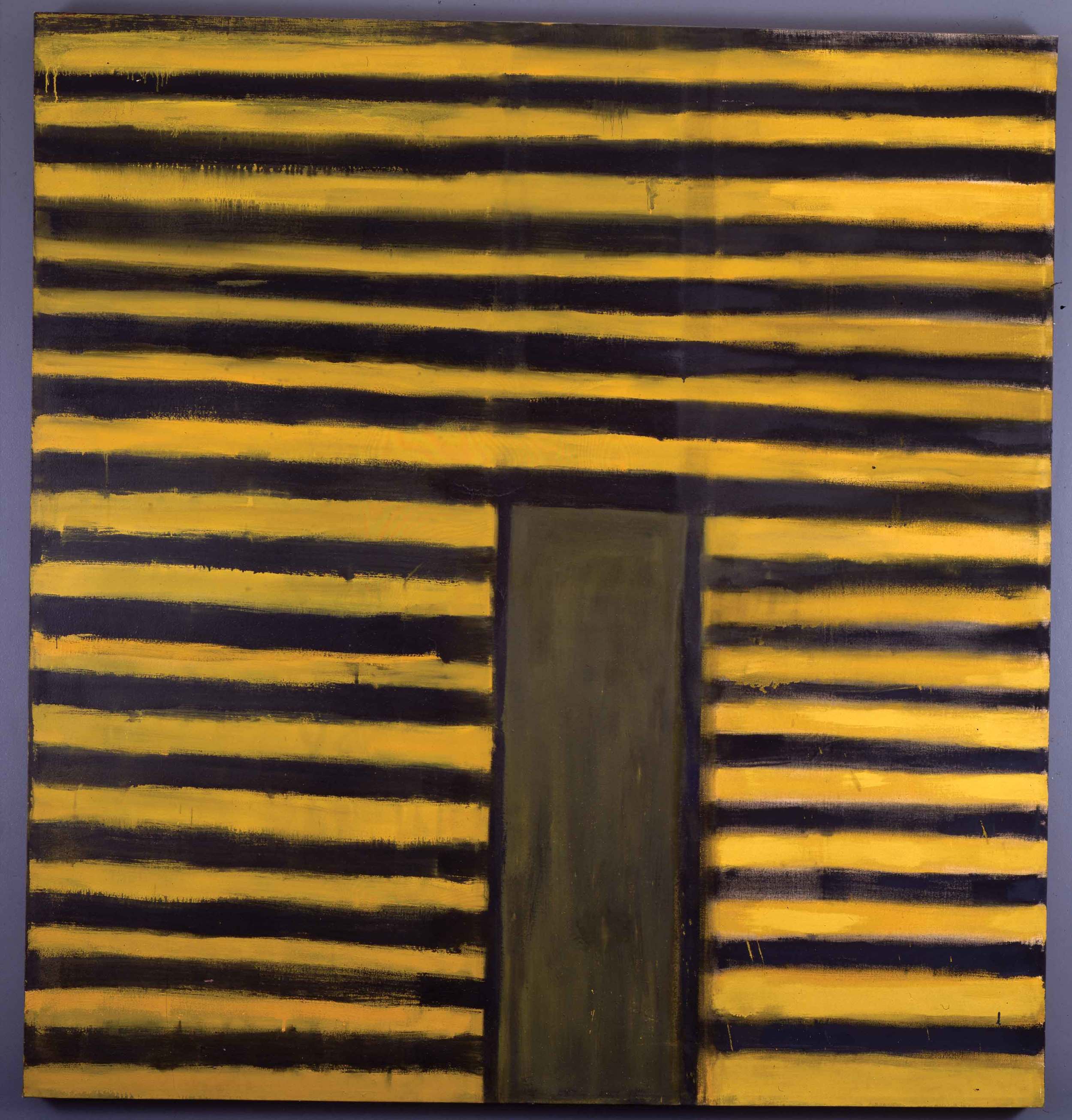Randi Hoffman reviews: Frank Stella, A Retrospective
Frank Stella, The Whiteness of the Whale (IRS-1, 2X), 1987. Paint on aluminum. 149 x 121 3/4 x 45 1/4 in. (378.5 x 309.2 x 114.9 cm). Private collection. © 2015 Frank Stella/Artists Rights Society (ARS), New York. Photograph by Steven Sloman.
By Randi Hoffman
Frank Stella Retrospective Takes Flight
Frank Stella’s retrospective at the Whitney, which closes February 7, showcases the artist’s evolution over the decades in terms of spontaneity and dimensionality. Ordered more or less chronologically, the exhibit begins with flat, ordered geometric shapes, often based on streetscapes he has witnessed, and becomes more and more three dimensional, until the paintings are sculptures of animals that seem ready to fly and walk by themselves.
Early in his career, Frank Stella had a studio on Eldridge Street on the Lower East Side, and named many paintings of this period after the sidewalks he pounded daily. The paintings East Broadway, Great Jones Street, and Eldridge Street, from 1958, are sometimes monochromatic, and all comprised of squares and shapes. They capture the grim industrial atmosphere of Lower Manhattan of the 50s, before it was developed into the Houston street lined with glass towers that it is today.
These paintings are extremely organized, and Stella planned them in advance. East Broadway consists of fuzzy, mustard-colored and black horizontal stripes pierced by a black vertical rectangle, that looks like a door, at the bottom, slightly off center. Stella said he used cheap masking tape, so that the colors would bleed into each other more.
His series of black rectangles within rectangles was exhibited at MOMA when Stella was only 22-years-old, awarding him early acclaim. Even as early as these “black paintings,” Stella’s work was beginning to exhibit layering and three-dimensional texture. Soon however, in additional to layering his paint, he began to build on his paintings, creating a more sculptural character.
With his protractor paintings of the sixties his paintings became cleaner and more precise, continuing with pre-planned, geometric techniques. Containing arcs within squares, he named them after cities with circular street plans he had visited in the Middle East. In the center of the exhibit is the mural-sized Damascus Gate.
By 1987 Stella’s spontaneity had increased. His Moby Dick paintings are three-dimensional and built of painted aluminum, named after Herman Melville’ classic American novel. The Whitney exhibits three of the series. It is said that his sculpture of Moby Dick was inspired by his encounter with a Beluga Whale at an aquarium (most likely the Coney Island aquarium, which used to have huge tanks of Beluga Whales), which he described as “an unlikely combination of mass and grace.” The Whiteness of the Whale depicts waves, and perhaps fire and harpoons, as well as the kinetic white shape of the whale. It all feels like it is in motion. Another in the series is Fedullah, named after Captain Ahab’s loyal first mate, who helped him find the elusive whale.
Stella’s most recent work mostly completed after the year 2000, is a room of full-fledged sculptures, no longer anchored to the wall at all. La penna di hu, 1987-2009, is a cacophony of shapes made of aluminum and fiberglass, containing boxes of slatted wood resembling the home-made crab traps I used to see on the Chesapeake Bay.
Overall, this mostly chronological arrangement of Frank Stella’s work shows the early influence of the abstract expressionists, and his architectural influences, moves to a more minimalist representation of shapes, and then becomes looser, and more spontaneous and aerodynamic. It is a breath of fresh air, and fits well in the airy space of the new Whitney.
Frank Stella, East Broadway, 1958. Oil on canvas. 85 1/4 x 81 in. (216.5 x 205.7 cm). Addison Gallery of American Art, Phillips Academy, Andover, Massachusetts; gift of the artist (PA 1954) 1980.14. © 2015 Frank Stella/Artists Rights Society (ARS), New York.


